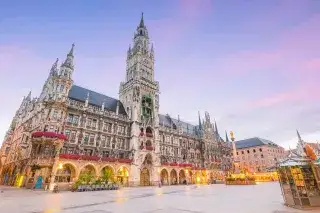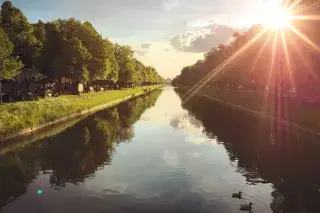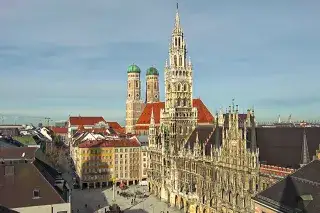Planned ruin and pilgrimage site: This is the Magdalenenklause
Magdalenenklause in Nymphenburg Palace Park: Information and tips
The fact that the Magdalenenklause is only partially plastered and has cracks was deliberate on the part of Elector Max Emanuel: The pleasure palace in the Nymphenburg Palace Park shows one of the first ruined architectures in European garden art. Find out everything about the Magdalenenklause.

More actions
History of the Magdalenenklause: Retreat with healing properties
Joseph Effner erected the Magdalenenklause as the third park building in the Nymphenburg Palace Garden north of the parterre from 1725 to 1728. The Klause was actually built to provide Elector Max Emanuel with a retreat of contemplation far from the hustle and bustle of the court. However, by the time the Klause was inaugurated in 1728, he had already died.
Even today, Christians make a pilgrimage to the ruined hermitage in Nymphenburg Palace Park on July 22, Magdalen Day. A visit to the Klause is said to have healing effects - for example, the Freiin von Pechmann, who was born blind, was allegedly able to see again thanks to the healing water that collects in a basin inside the Klause.
Architecture: A deliberate ruin
The special ruin architecture of the hermitage reflects the thought of the Baroque: it reminds of the transience of everything earthly. Inside, the hermitage is designed as an imaginative grotto with shells, colorful stones and tuff. Next to a Magdalene figure, a skull reminds us of human mortality.
In the healing water pool, the sky is reflected through a hole in the ceiling, giving the impression that one can see the sky on the other side through the earth. The ruin is surrounded by a deliberately overgrown tree garden.
At a glance
Magdalenenklause in Nymphenburg Palace Park: Information and tips
Schloss Nymphenburg 1
80638
München
Tel:
+4989179080




